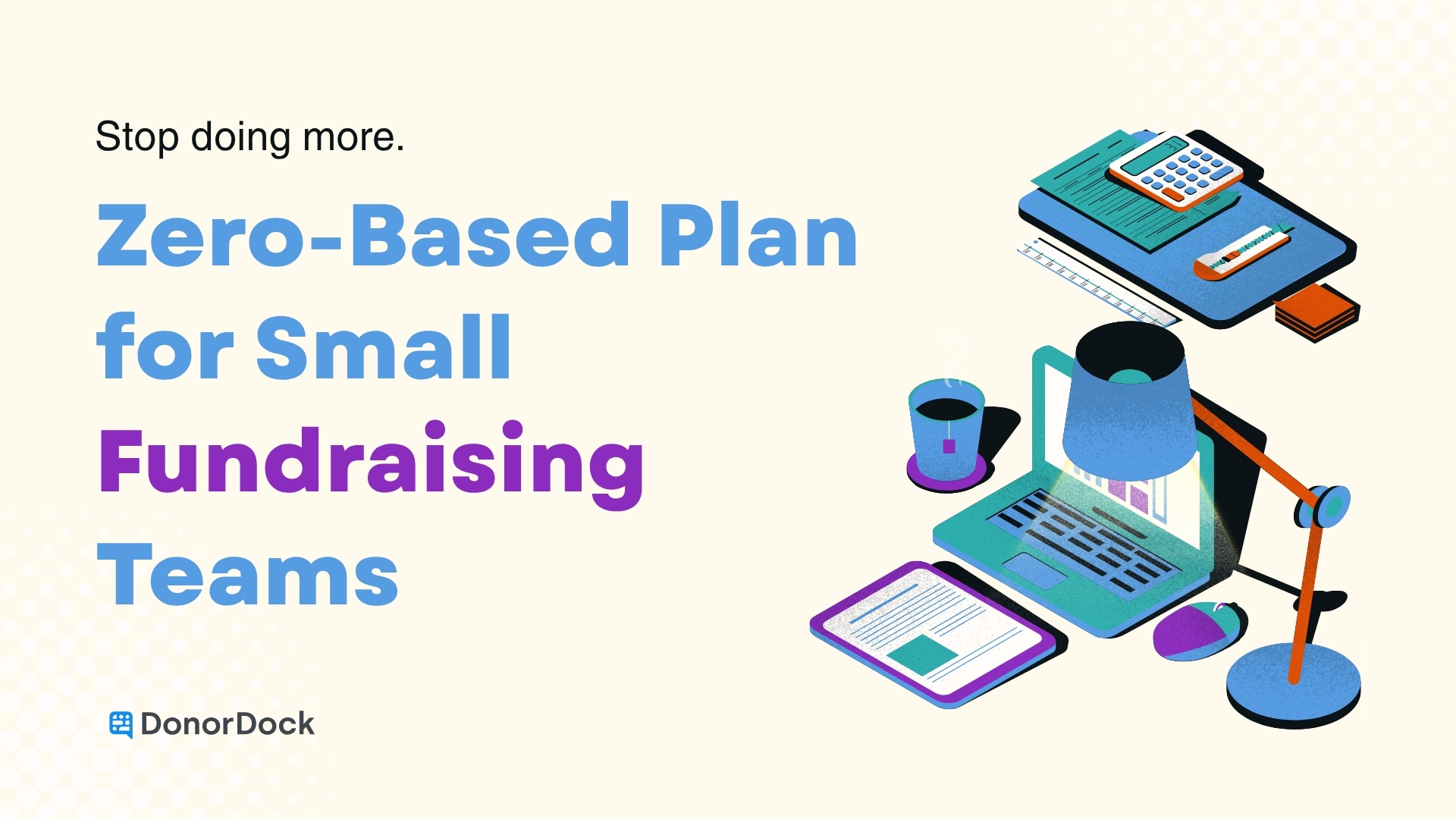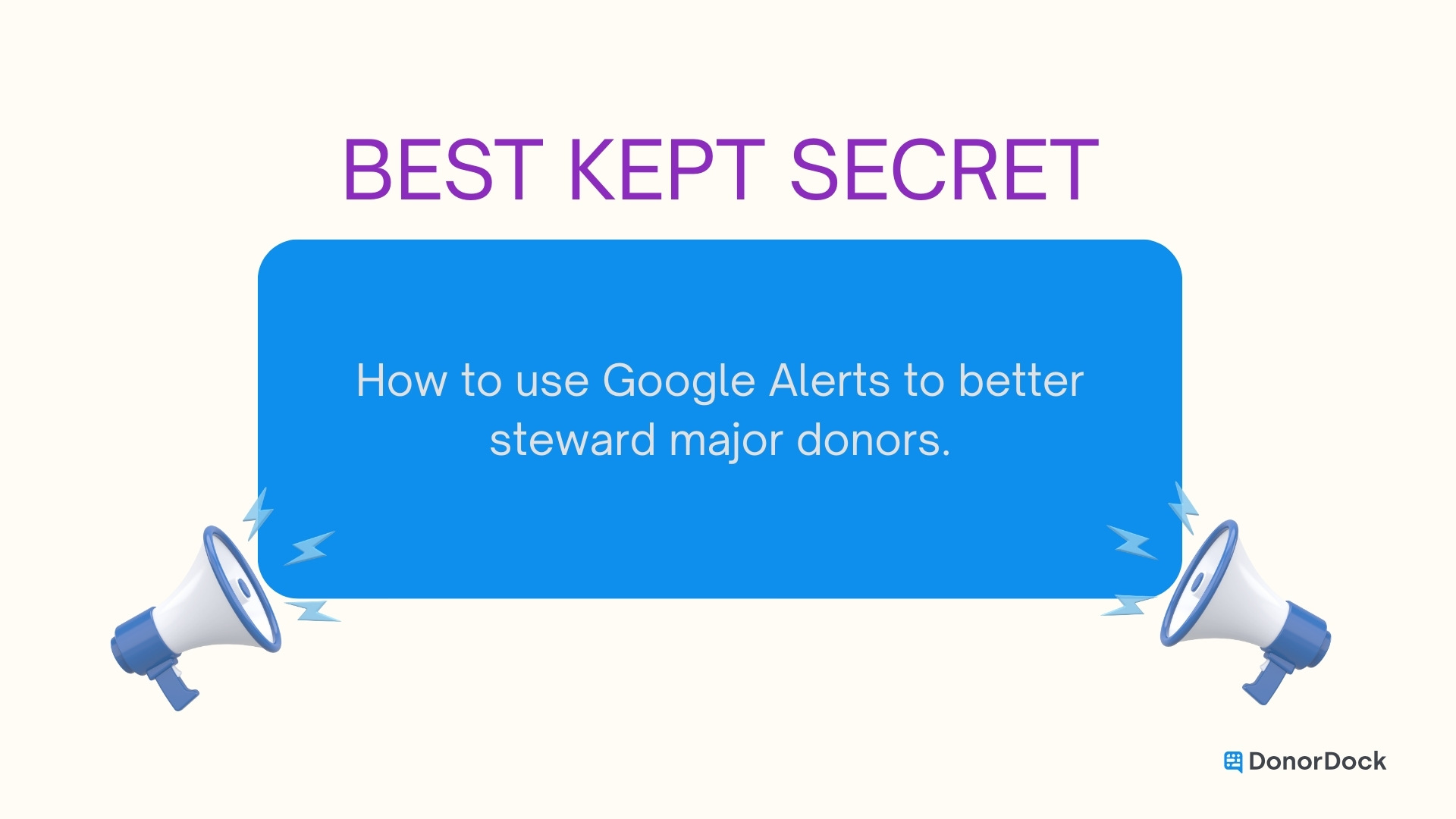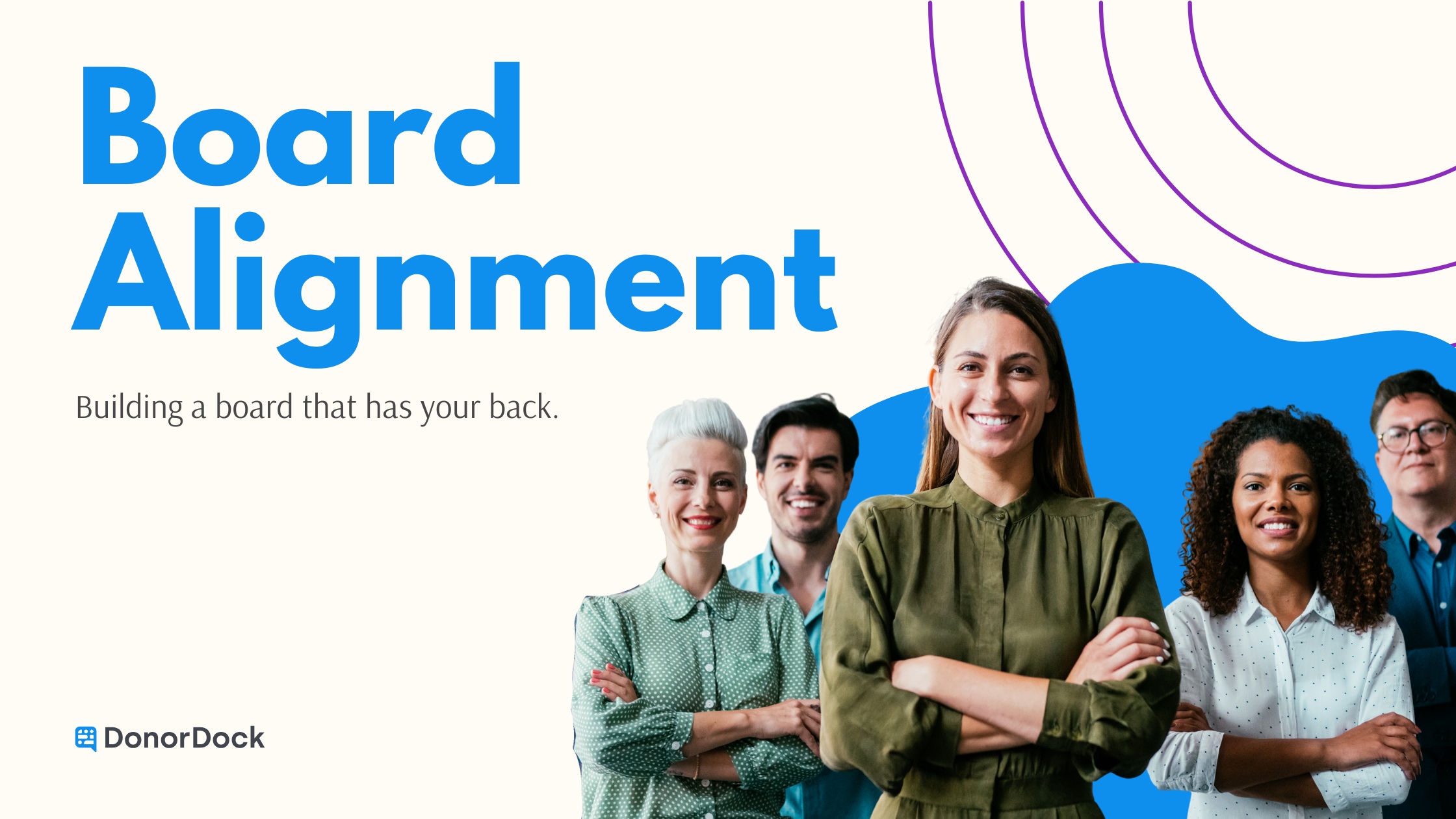Small nonprofit teams rarely suffer from a lack of ideas. The problem is the pileup. Social posts, events, peer-to-peer, five grant deadlines, seven newsletters, and a board member who “just heard TikTok is hot.” When everything is a priority, nothing gets the focus it deserves. This is where a zero-based plan helps you cut through the noise and channel limited energy into the work that actually moves revenue and relationships.
Below is a practical, zero-based approach built for small and growing fundraisers. It helps you pick a lean set of high-return activities, schedule them, and defend your focus with data.
What zero-based planning means for fundraising
Zero-based planning starts from a blank page. Instead of rolling last quarter’s busy list forward, you ask: If we were starting fresh today, what 5 to 8 activities would we choose to reach this quarter’s goal and serve donors well?
Why it works right now:
- Resources are tight and returns are uneven. Online revenue ticked up only slightly last year, but recurring giving did the heavy lifting. Monthly giving grew by 5% and now makes up 31% of all online revenue according to the latest M+R Benchmarks.
- Email still matters, even with softer metrics. Email directly sourced 16% of online revenue in 2023, and nonprofits raised $58 per 1,000 fundraising emails in 2024, per M+R’s 2024 and 2025 key findings.
- Translation: you’ll get farther by doubling down on a few proven levers and trimming the rest.
“Start from zero. Choose the few plays that win. Give them your best reps.”
Run a zero-based month in 5 steps
1) Inventory everything you’re doing
List it all. Events, appeals, emails, major donor meetings, grant applications, social campaigns, volunteer outreach, stewardship touches. Include the recurring “little” things that eat hours.
2) Score each item for impact and effort
Use a simple 1 to 5 scale for each: expected net revenue or relationship impact this quarter, and required time or cost. Add the two scores together. You’re not looking for perfect math. You’re looking for clarity.
3) Make four buckets
- Keep: High impact, low to moderate effort.
- Test: Promising, but unproven. Set a small, time-bound experiment.
- Park: Good idea, wrong quarter. Capture it on a backlog for the future.
- Cut: Low impact, high effort. Be brave.
4) Choose your 5 to 8 core plays
Lock in a lean menu for the next 90 days. For most teams, the shortlist includes:
- A monthly giving push, because recurring gifts are rising and stable.
- A steady email rhythm, because email continues to contribute real revenue even as response rates soften.
- A simple donor journey, so every new or reactivated donor gets consistent follow-up. Start here with DonorDock’s guide to automated donor journeys.
- One proactive mid-level upgrade effort.
- One cultivation habit you can sustain, like five thank-you calls every Tuesday.
5) Schedule the work and protect the time
Put the plays on the calendar first. Then block 60 to 90 minutes of protected focus time each day for the highest-leverage donor work. Anchor the quarter with one clear WIG, or Wildly Important Goal, so the team always knows what “winning” looks like. If you need a template, see DonorDock’s article on The Wildly Important Goal.
“If everything is important, nothing is prioritized. Decide, then defend your calendar.”
What to keep by default, backed by data
Zero-based doesn’t mean starting from scratch every time. It means proving that a tactic earns its spot. These elements deserve a strong presumption to “keep,” with light improvements.
Monthly giving
Recurring revenue grew by 5% and represents 31% of online income, per M+R’s 2025 key findings. That reliability stabilizes cash flow. Make it easy to join on your form. Add one monthly-specific story to your email calendar every month.
A consistent email cadence
Email directly sourced 16% of online income in 2023. Even as individual metrics dip, steady, useful messages still raise money. Aim for one short appeal and one stewardship note per week. Keep it human and specific. If your team needs ready-made segments to aim those emails, try DonorDock’s primer on 6 strategic donor segments.
Simple automated journeys
Automation isn’t about blasting more. It’s about never missing the basics. New donor welcome. Post-gift “here’s what happens next.” A 60-day gratitude touch. DonorDock’s walkthrough on automated donor journeys shows how to keep automation human.
A small mid-level focus
Identify donors who gave 2 or 3 times in the past year. Invite them to a specific monthly amount tied to a tangible outcome. Treat them like insiders. Report back quickly.
What to question or cut
Zero-based planning gives you the confidence to say no. Put these activities under the microscope each quarter.
Big events that consume the calendar
If an event is irreplaceable for cultivation, keep it lean and pipeline-focused. Otherwise, compare the fully loaded cost to alternative plays you could run instead. Many organizations find events expensive relative to net revenue. If it’s beloved but low return, move it to “park” and revisit next year.
Orphan channels that siphon time
If a social, event, or other channel doesn’t directly feed your email list, drive donors to a page, or support major donor moves, shelve it or consolidate. Pick fewer channels and serve them better.
Reactive requests
When a request lands on your desk, apply the same scorecard. Does it clearly advance this quarter’s WIG? If not, add it to the backlog. DonorDock’s “Fundraise Your Way” offers a helpful lens for saying yes to mission-fit work and no to distractions.
“The bravest move is often the cut. Every no creates space for better yeses.”
A one-page scoreboard
Keep a lightweight scoreboard the team can see at a glance. Use lead measures you control, not just lagging revenue.
Weekly example:
- 15 thank-you calls completed
- 2 emails scheduled
- 1 donor story gathered
- 10 monthly upgrade invites sent
- 5 new subscribers added to email list
Review progress every Monday in a 30-minute huddle. Celebrate one win every Friday. These rituals keep a zero-based plan from drifting back into old habits.
Talking points for your board
If you need to make the case for a smaller menu, bring data.
- Monthly giving is the growth engine. Recurring revenue grew by 5% and accounts for 31% of online giving, per M+R’s 2025 key findings.
- Email still drives meaningful income. Email directly sourced 16% of online revenue in 2023, even as response rates slipped, per M+R 2024.
- Focus beats more. With online revenue growing modestly overall, organizations that prioritize repeatable plays like recurring gifts and disciplined email programs are better positioned to grow steadily.
Make the plan easier with tools that scale you
A zero-based plan becomes simple when your systems support it. DonorDock helps you automate the right touches, track your weekly scoreboard, and segment supporters without the spreadsheet sprawl.
- Build automated donor journeys without losing the human touch
- 6 strategic donor segments to map engagement
- The Wildly Important Goal: how to focus in a world of lemonade stands
- Fundraise Your Way
Wrap up
A zero-based plan trades “do more” for “do what matters.” Start from a blank page. Pick 5 to 8 proven plays. Put them on the calendar. Protect focus time. Then let consistency and stewardship do the quiet, compounding work that grows giving.
Built for small and growing fundraisers, DonorDock is Ready to simplify your plan and amplify your impact.
Start building meaningful donor relationships today. Schedule a Demo











